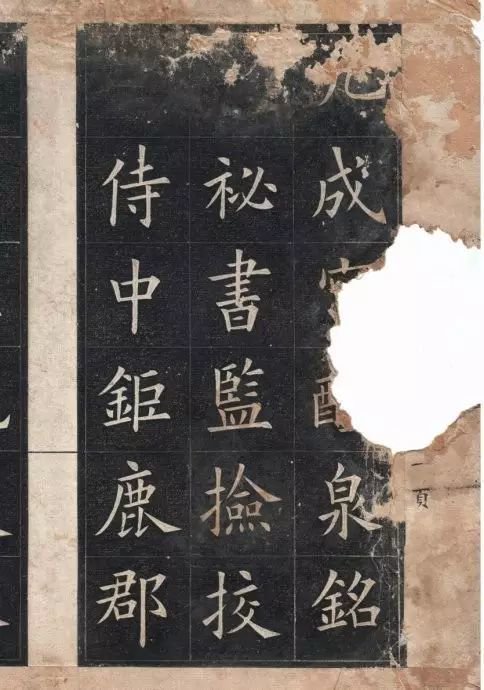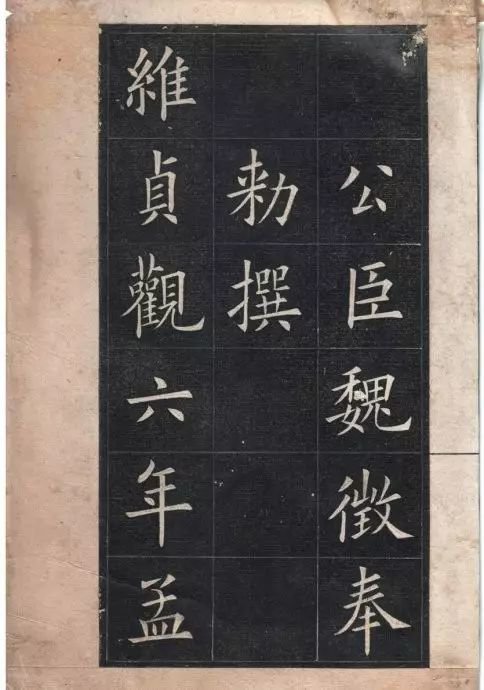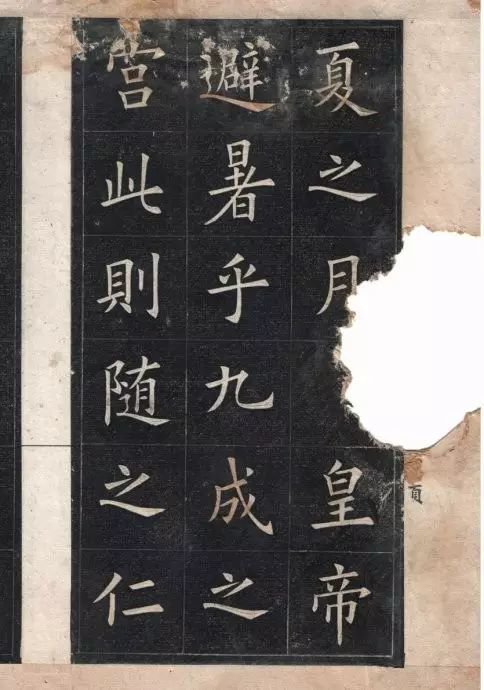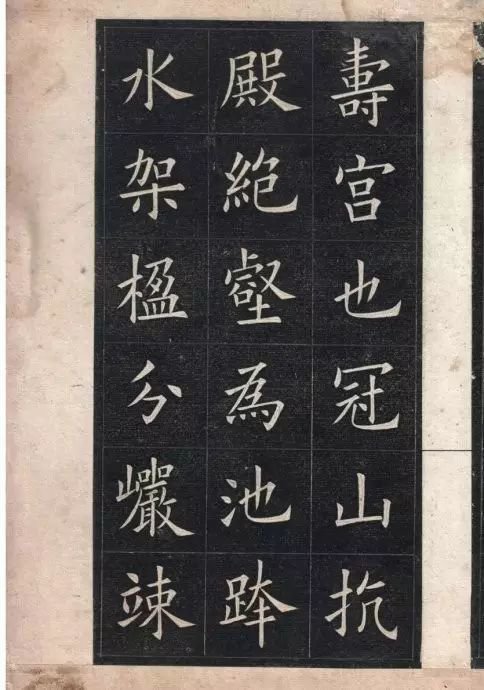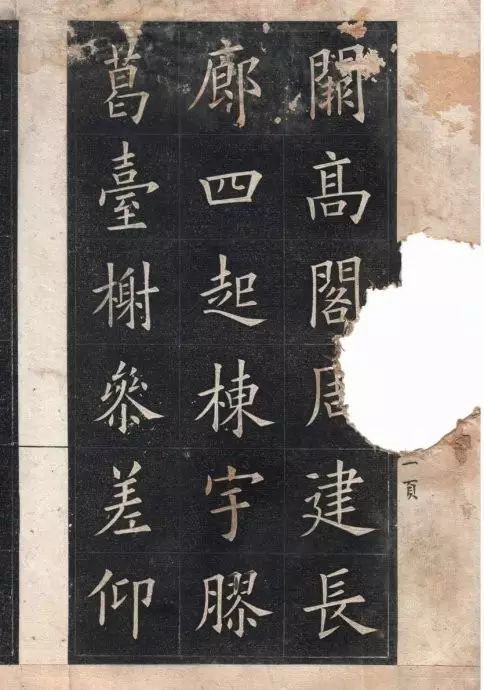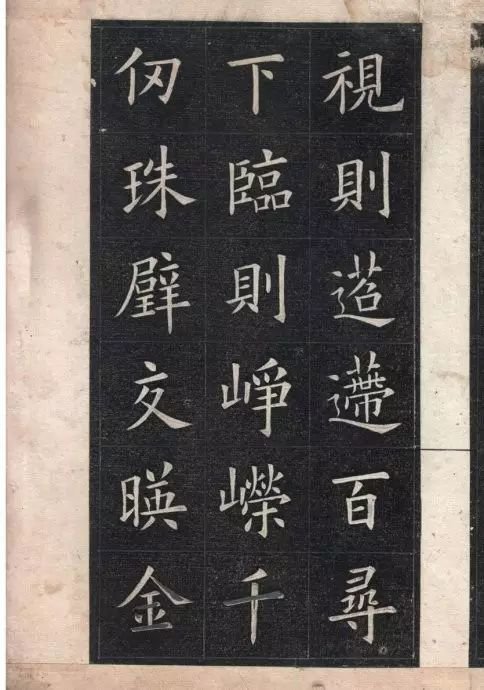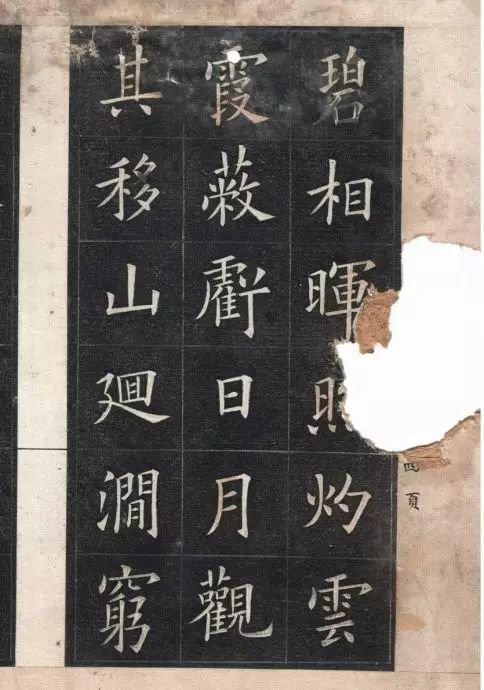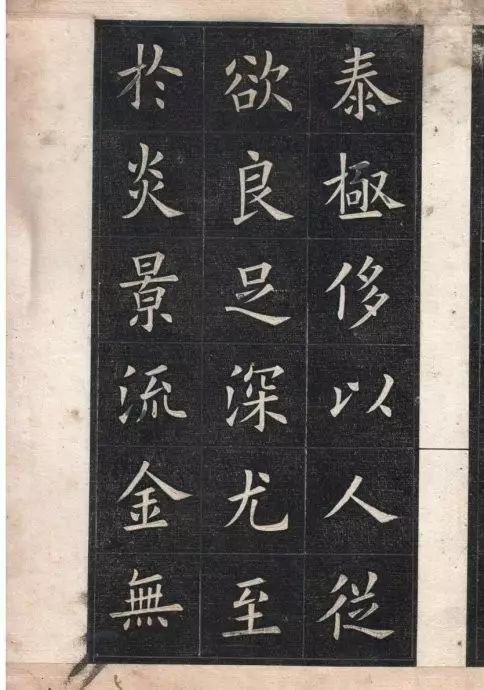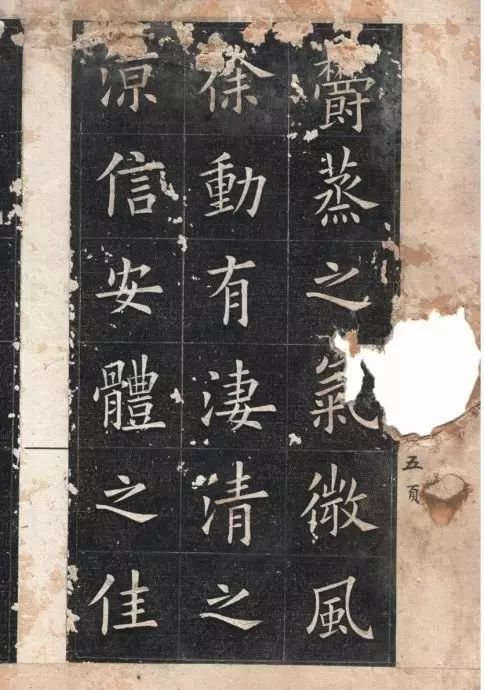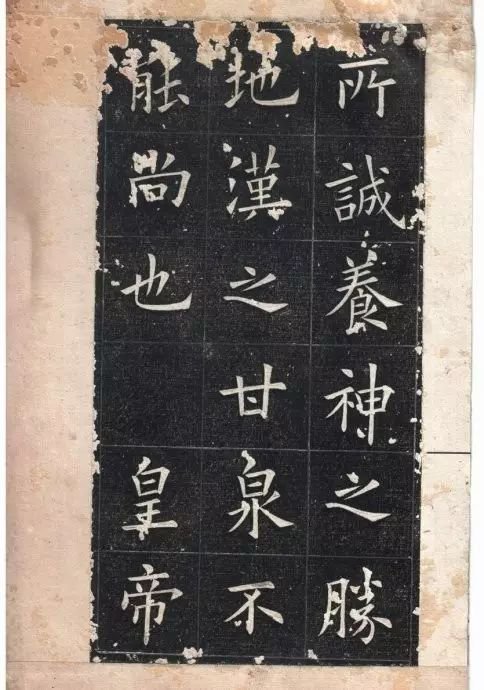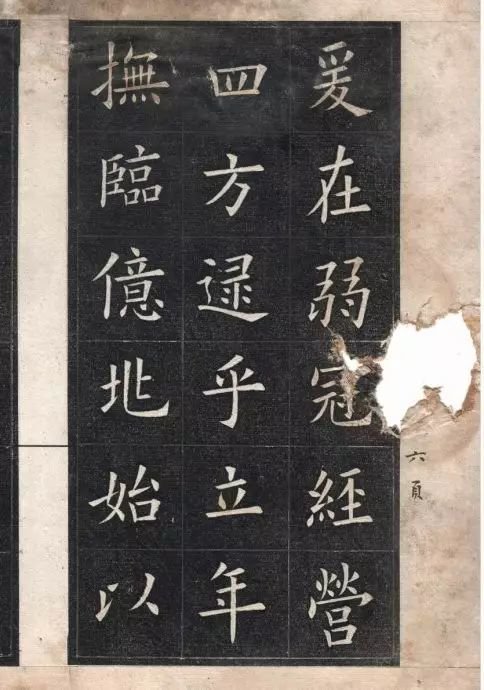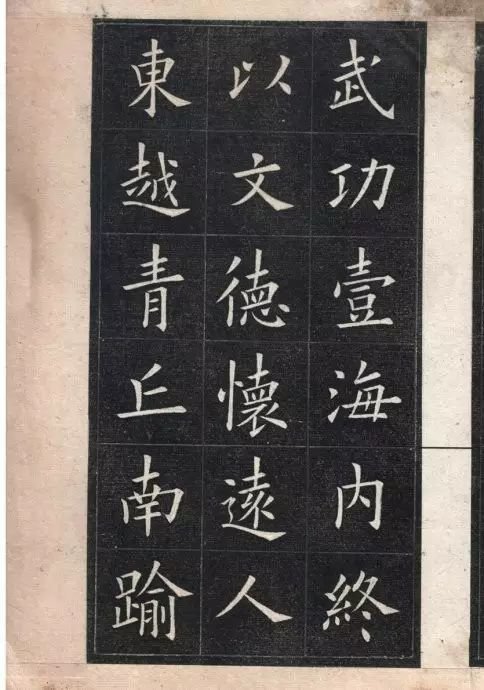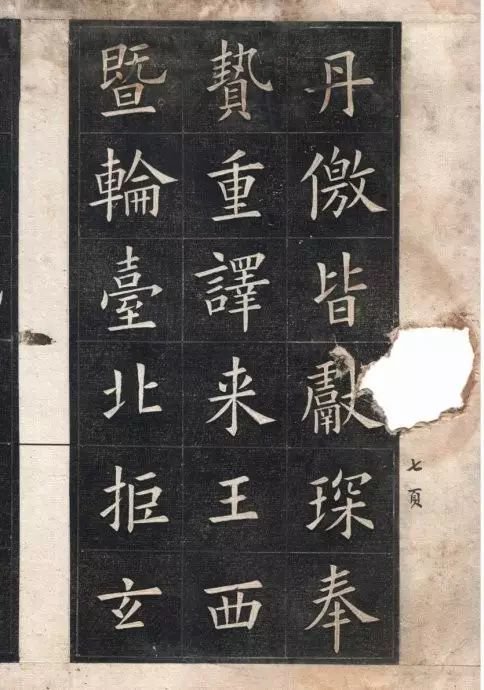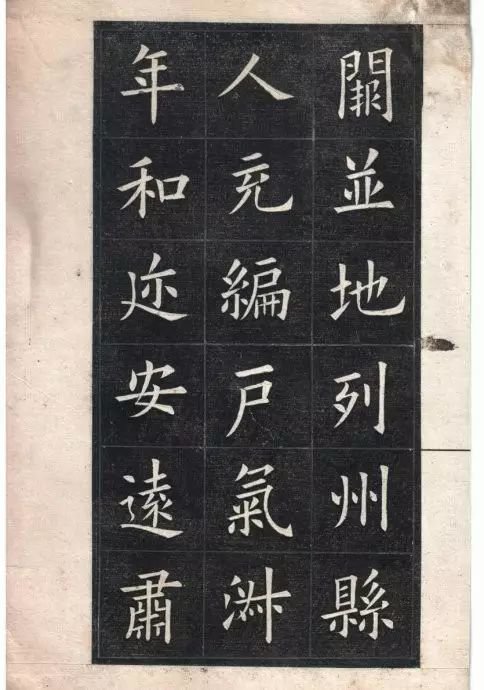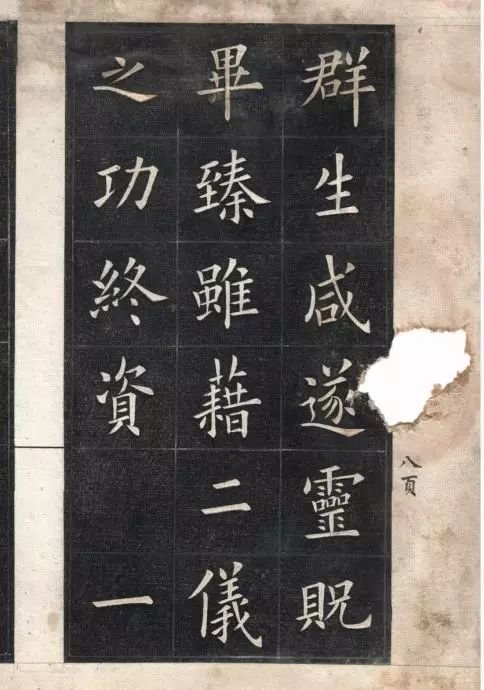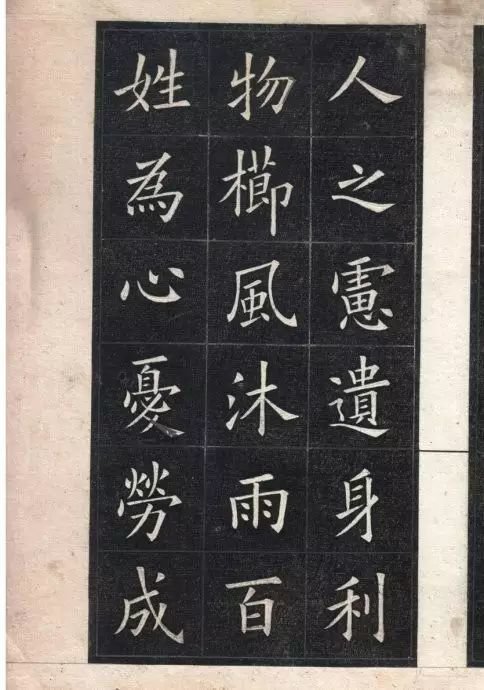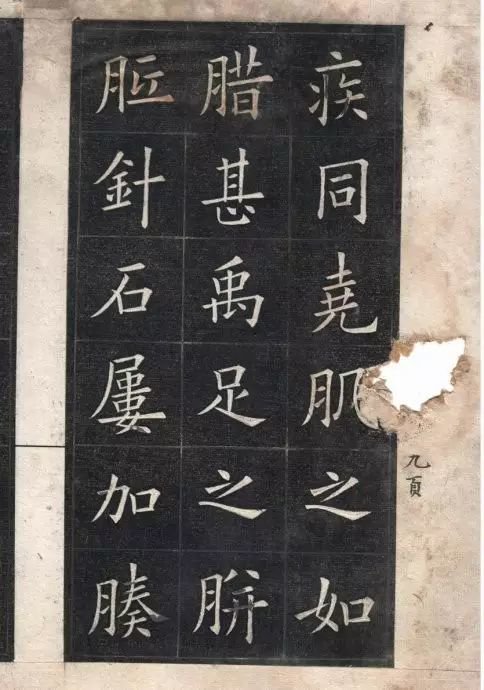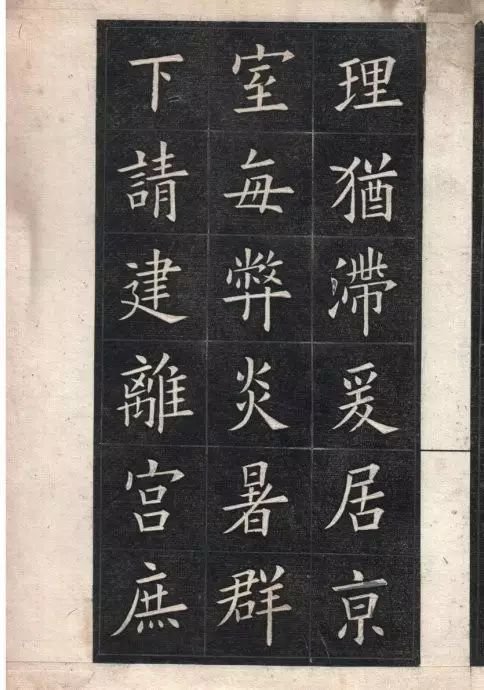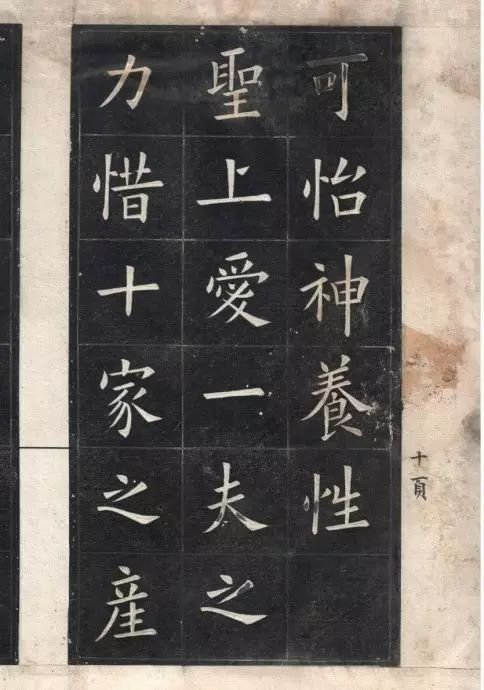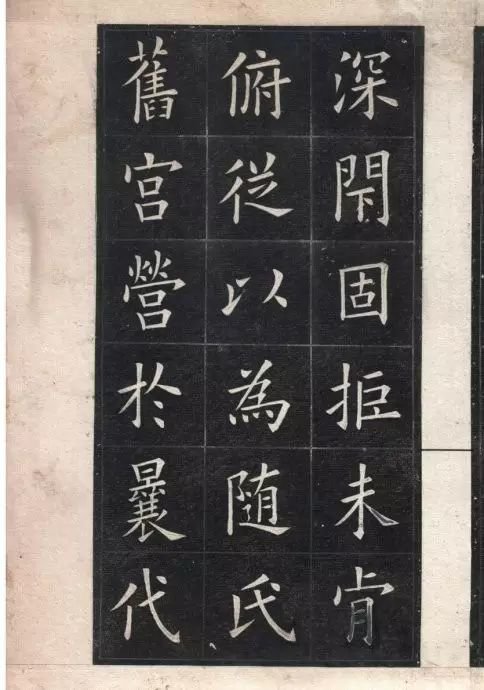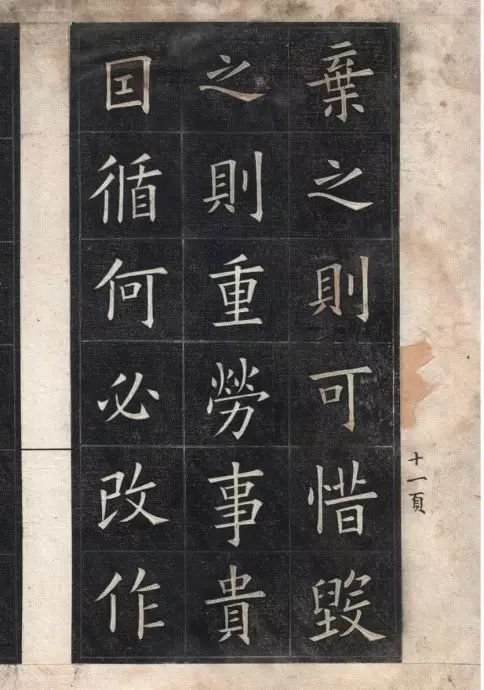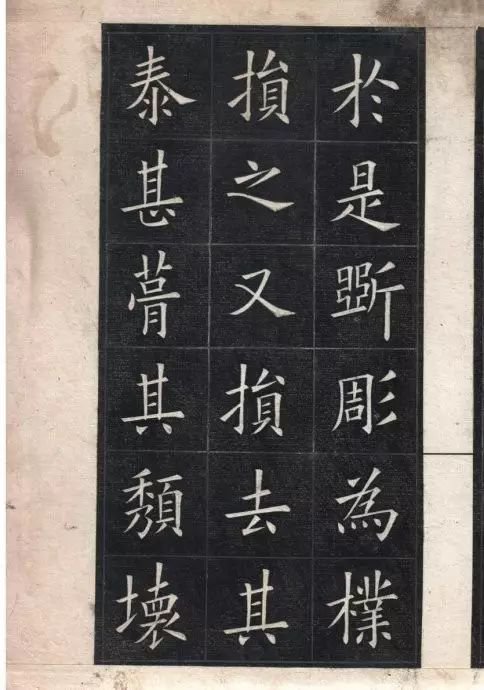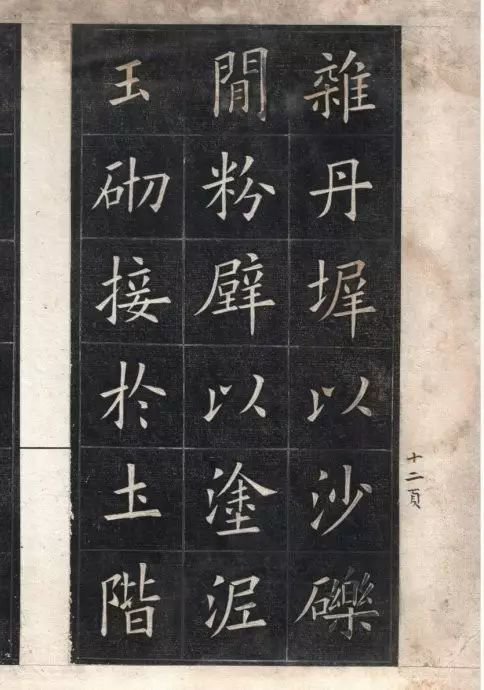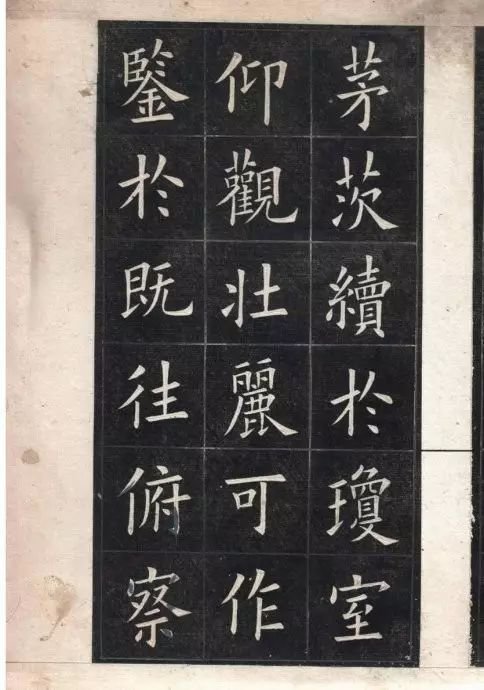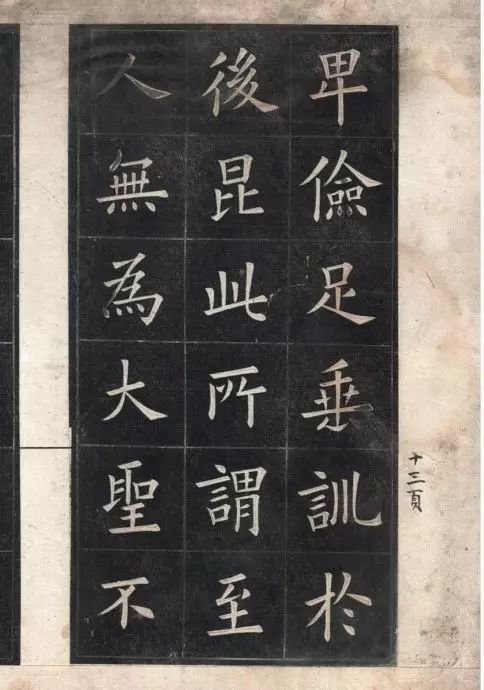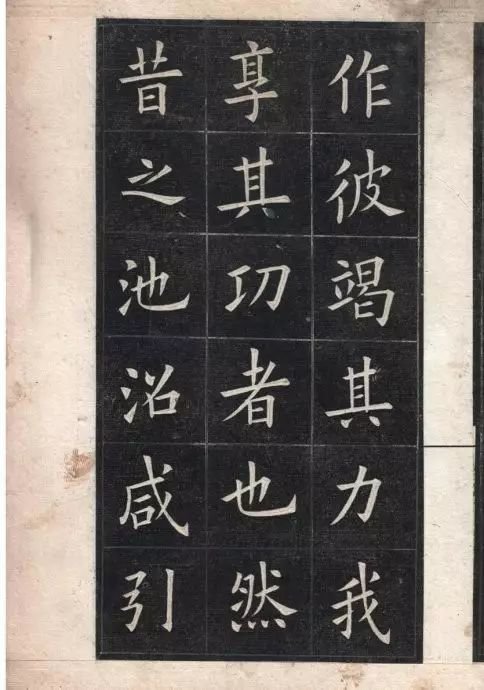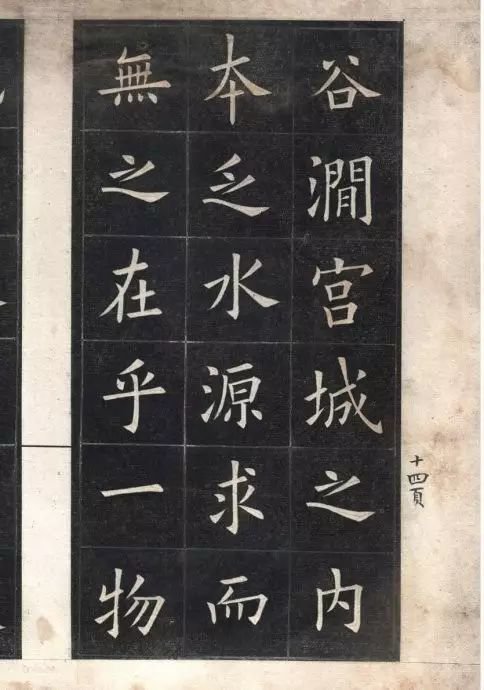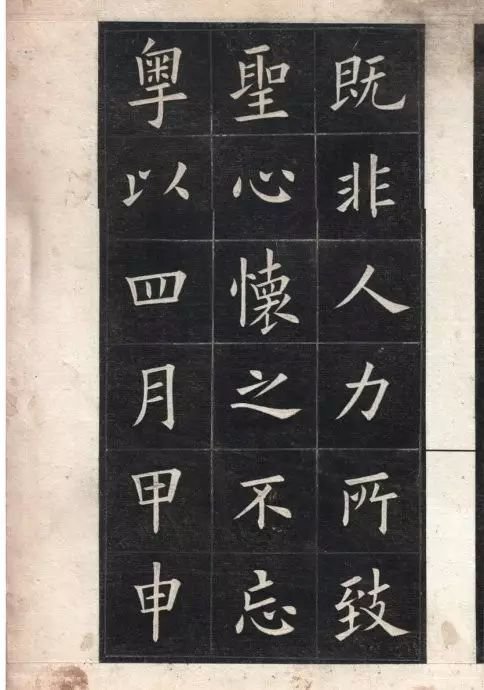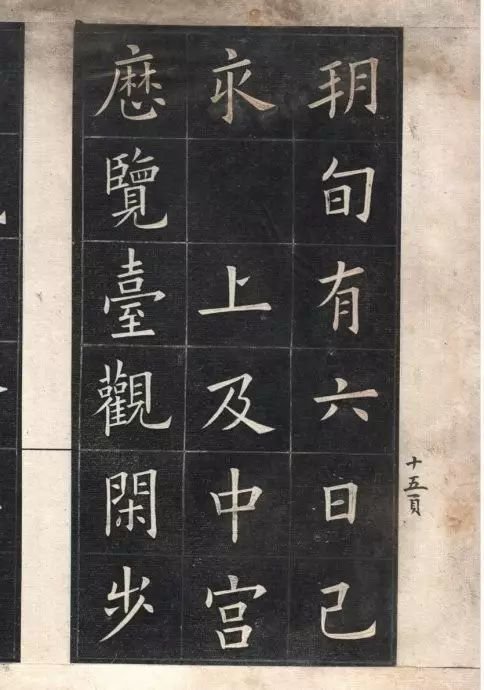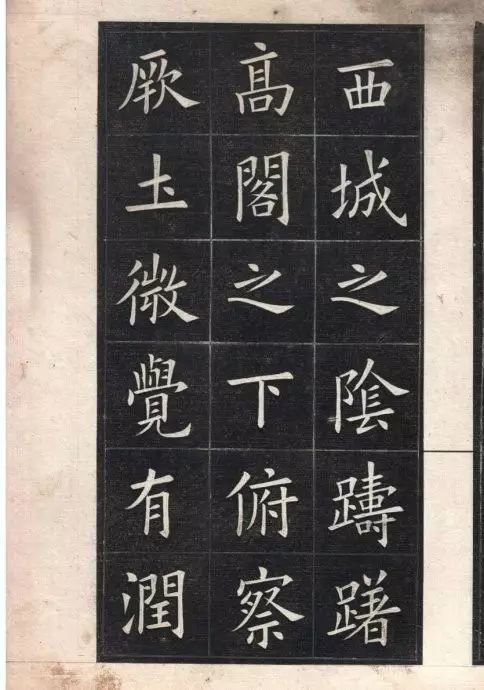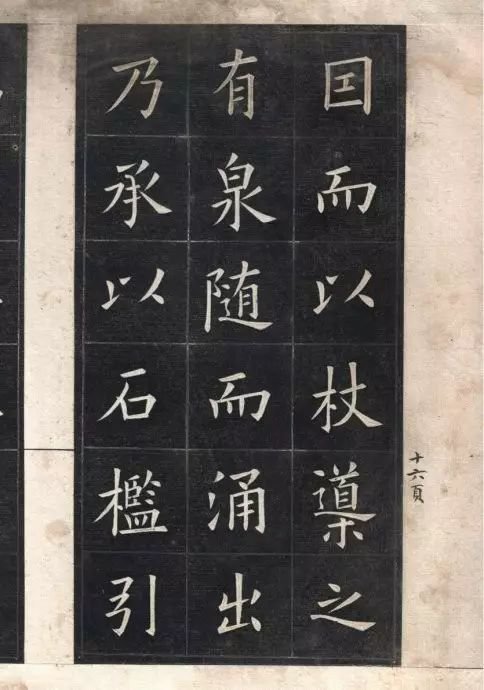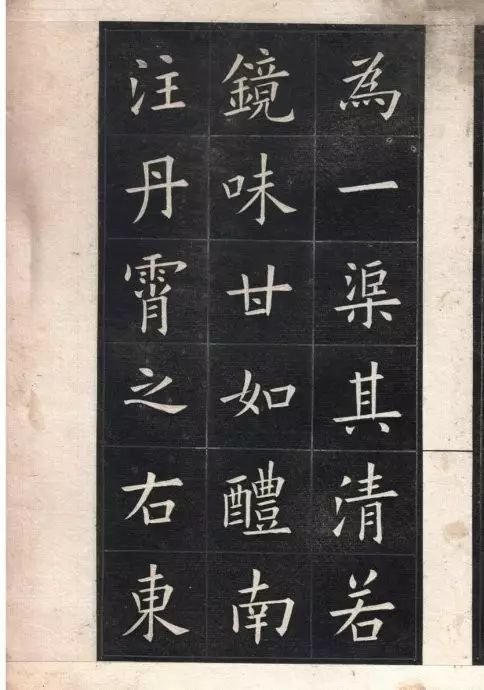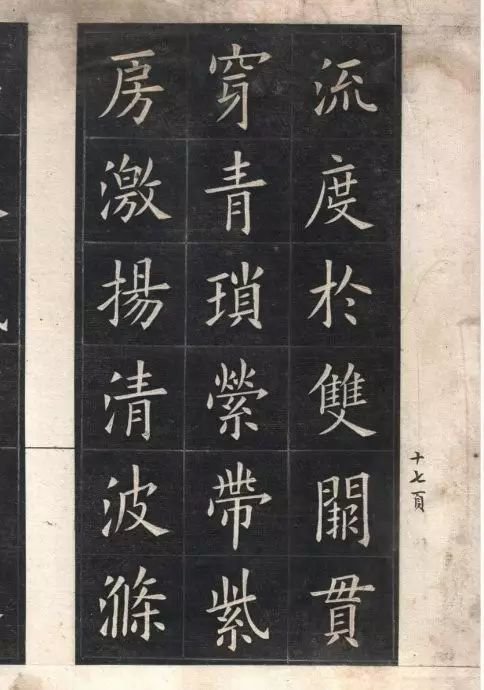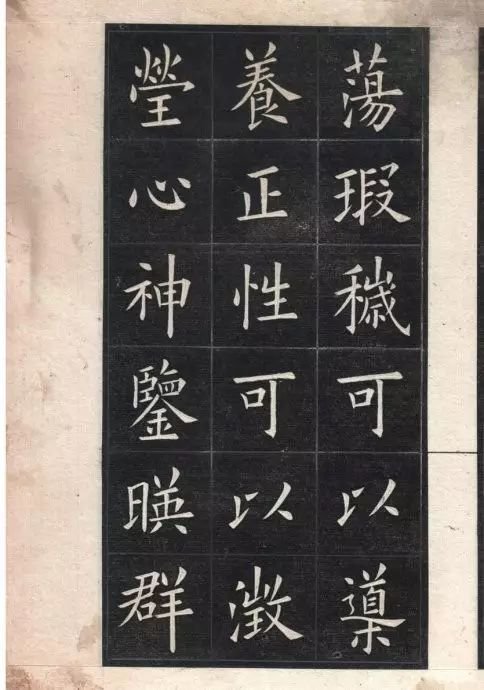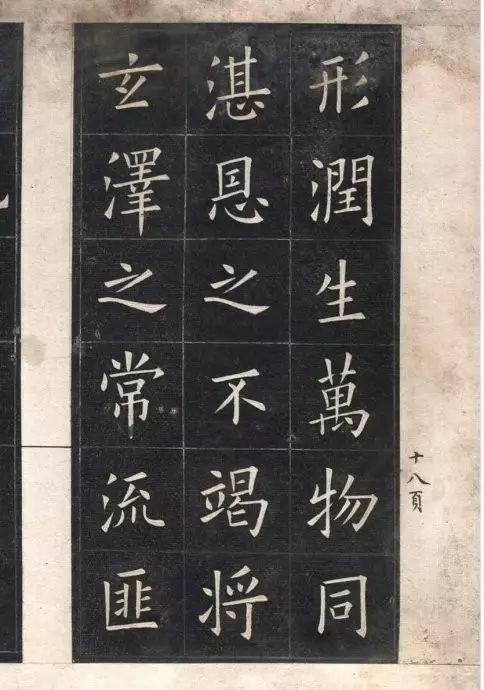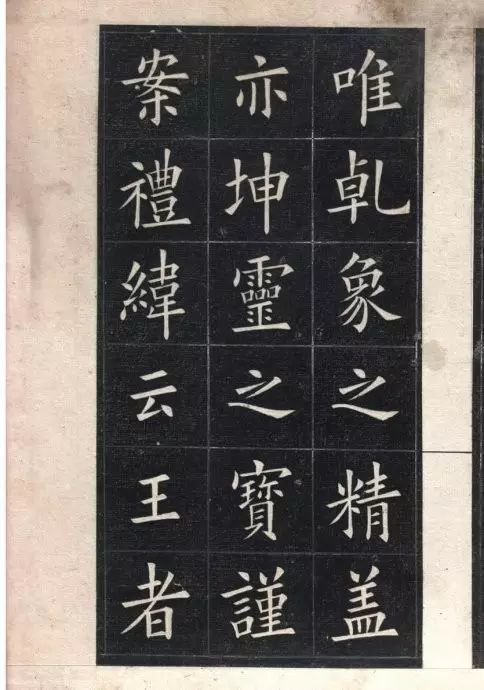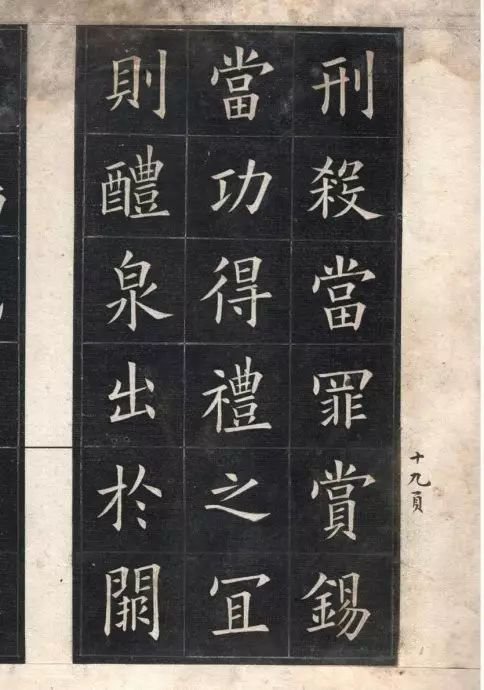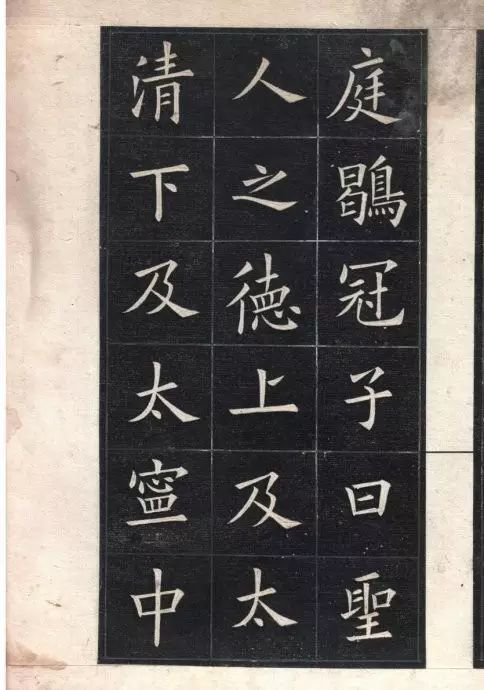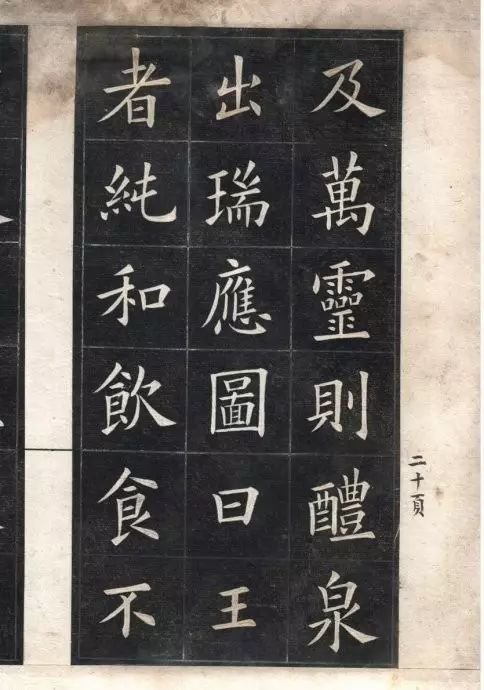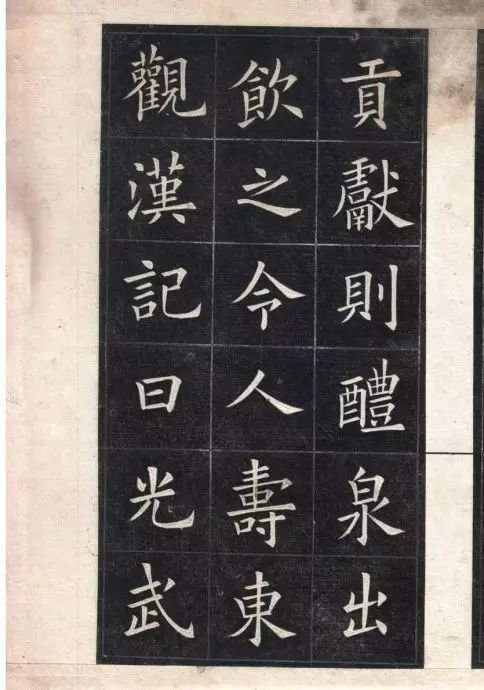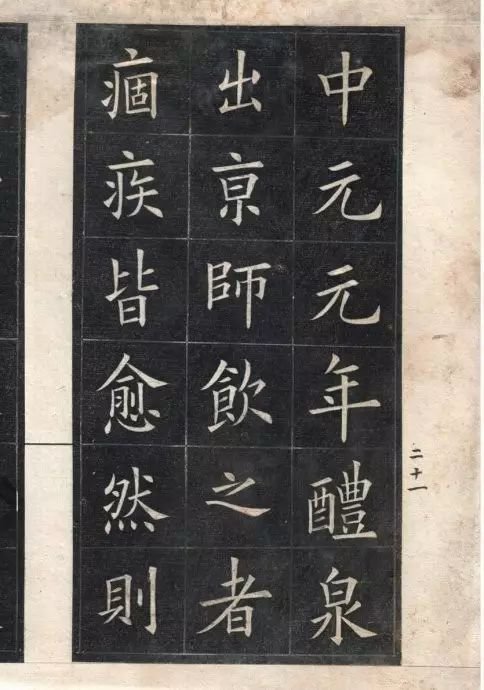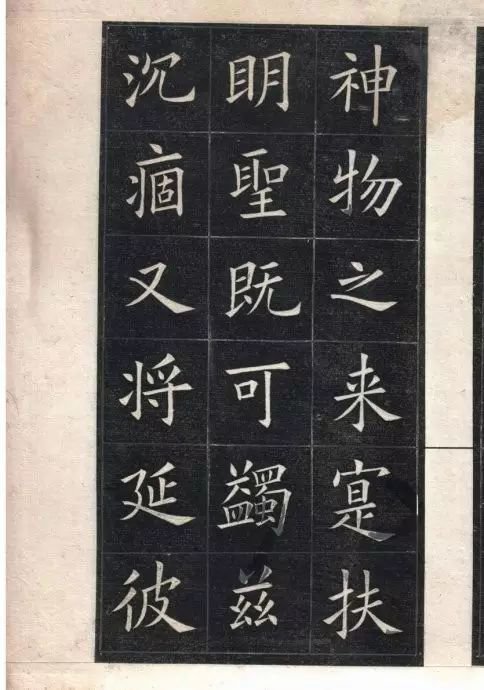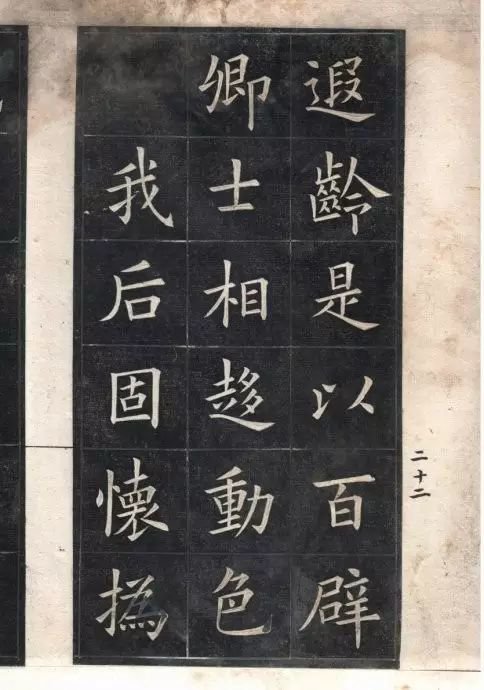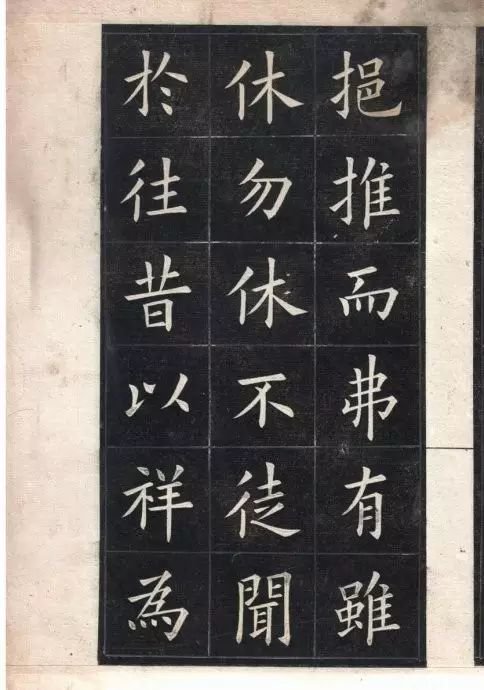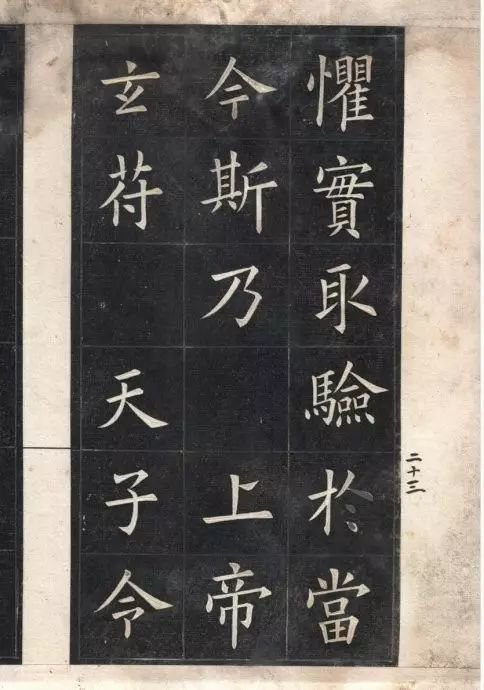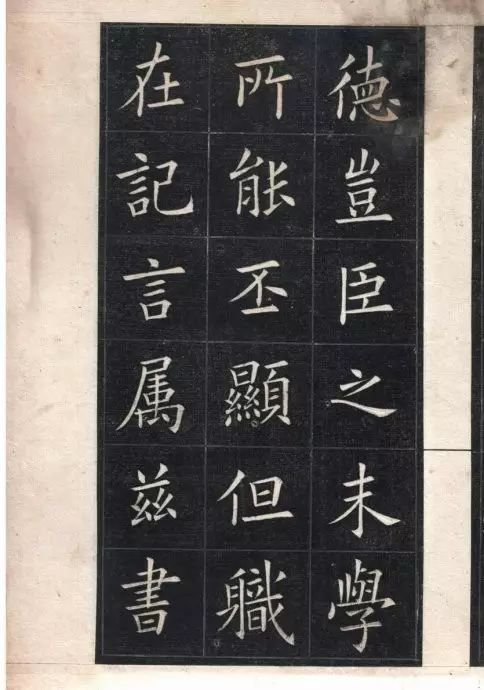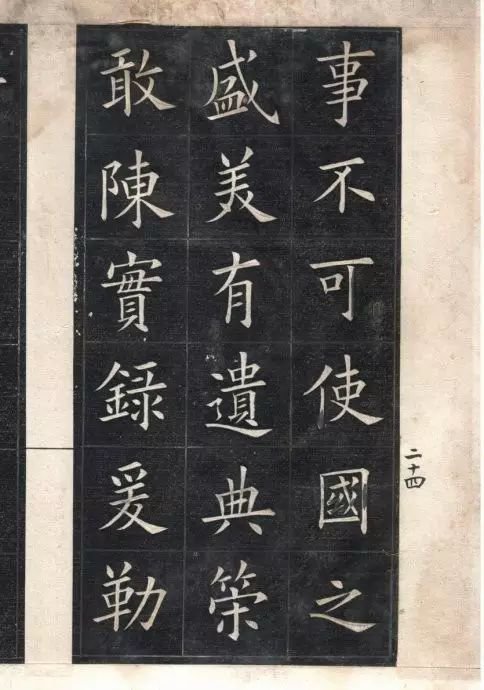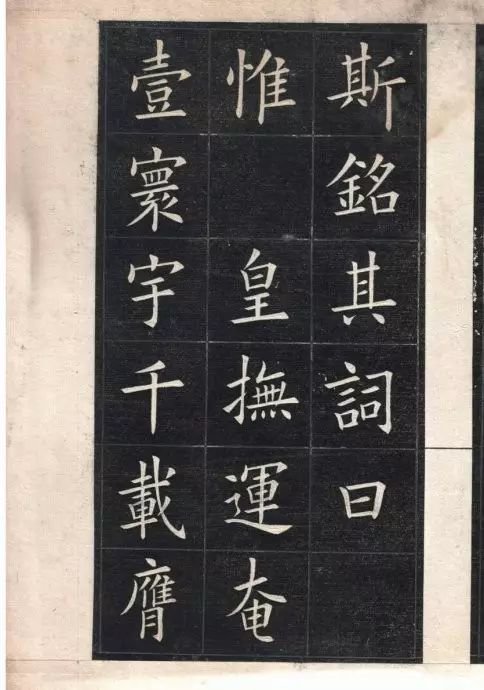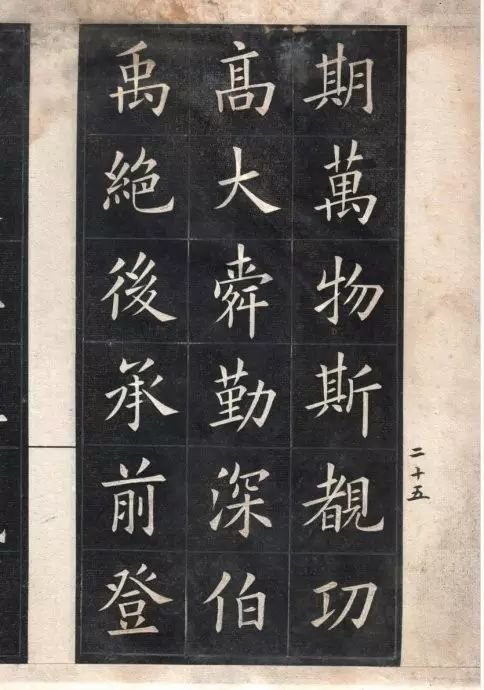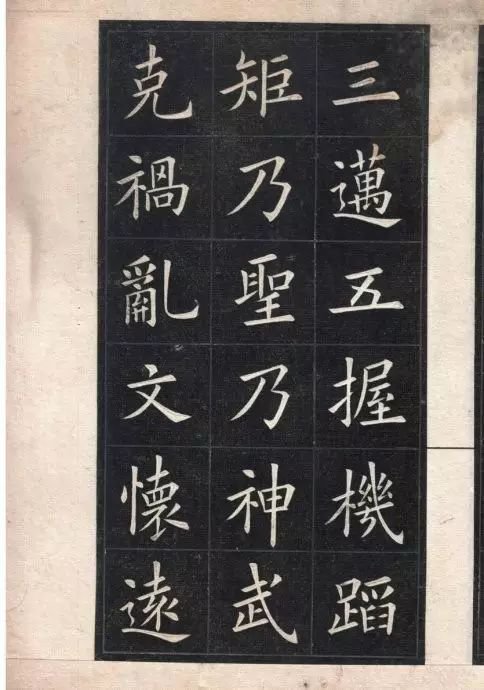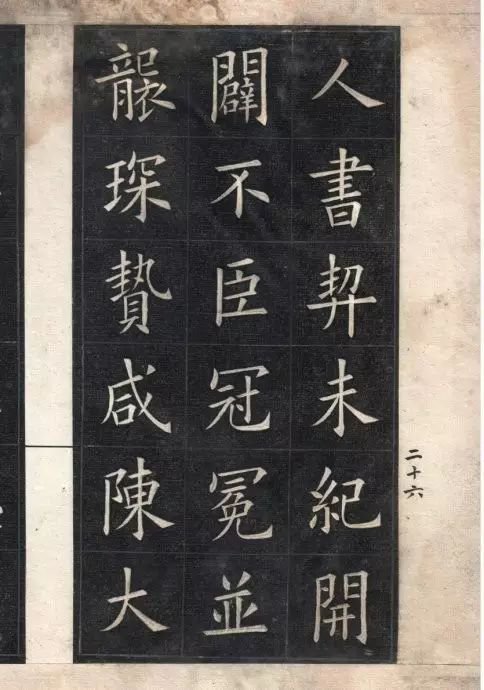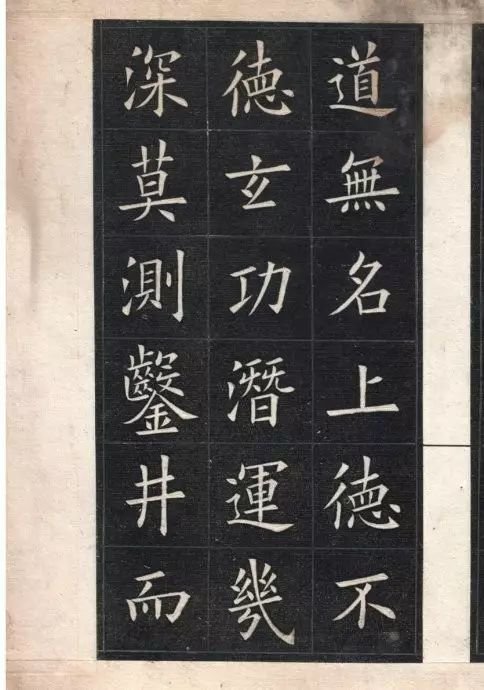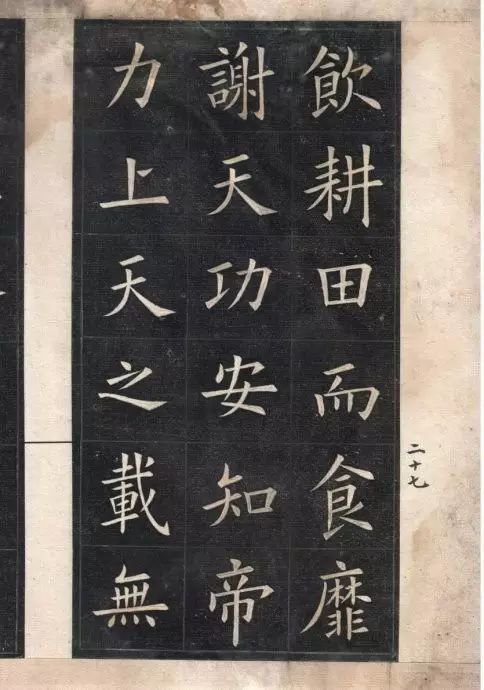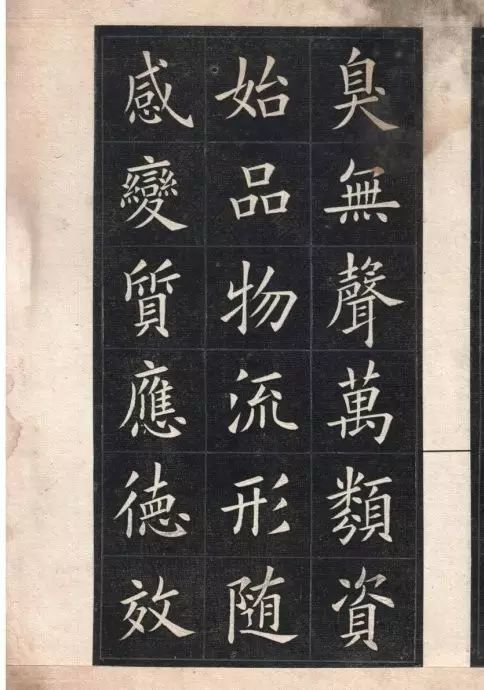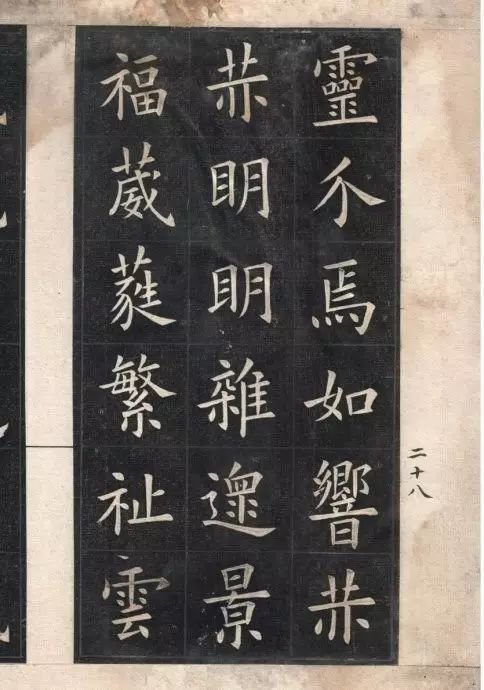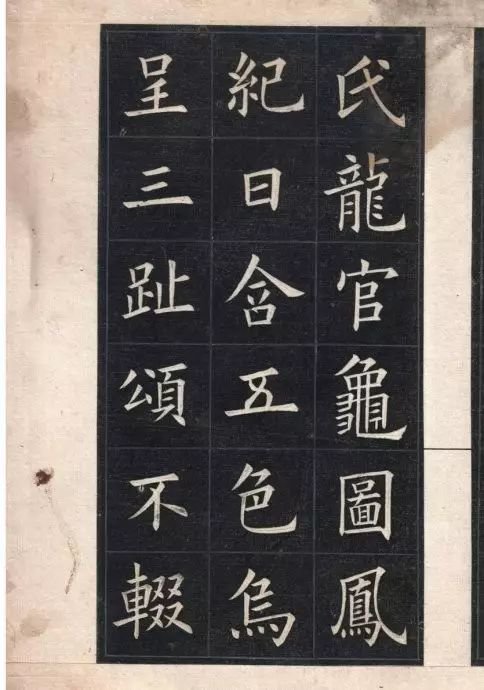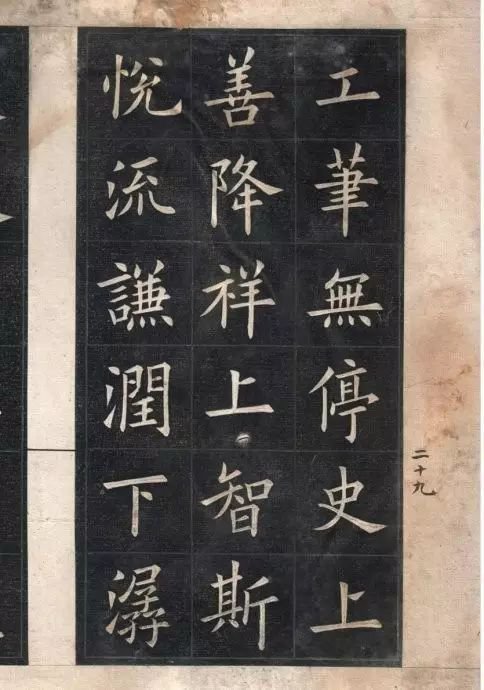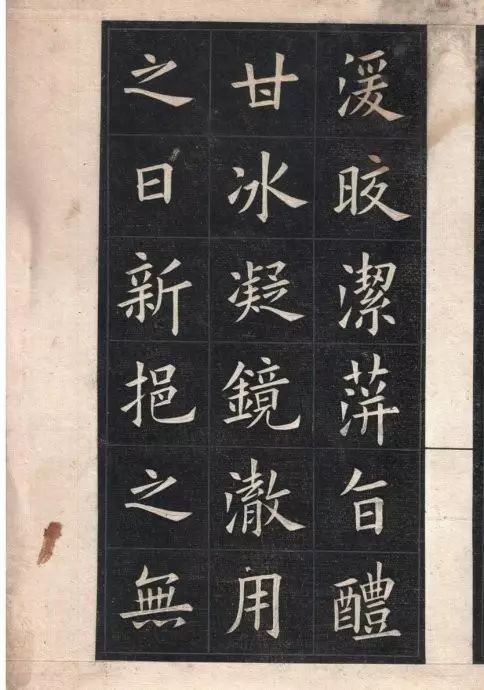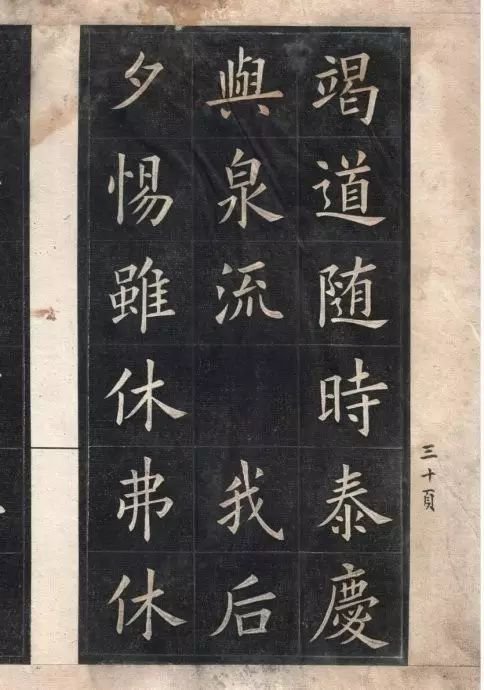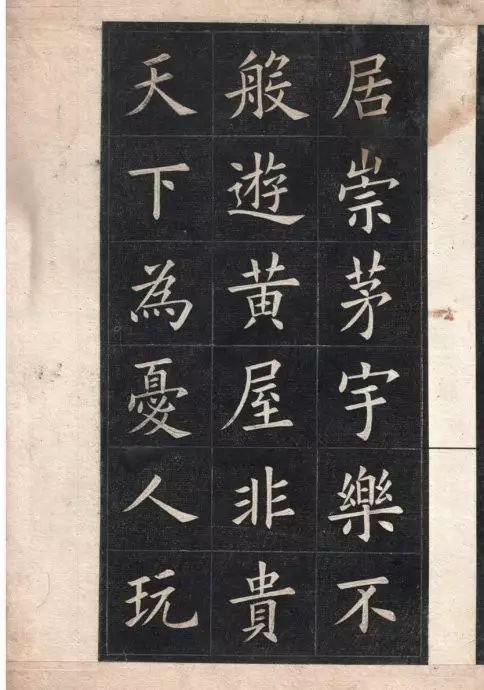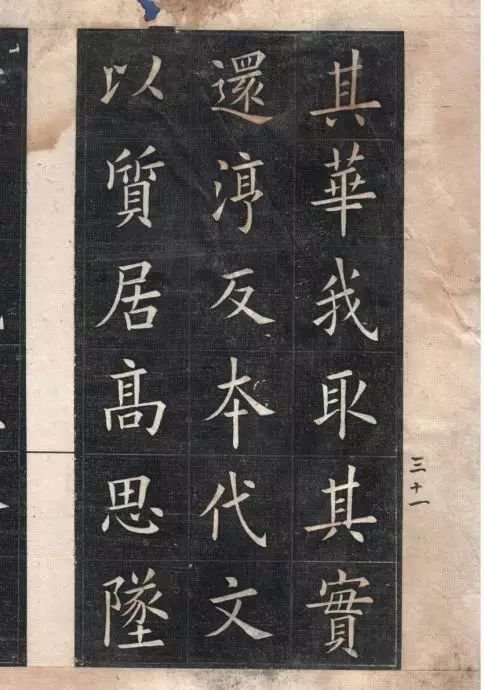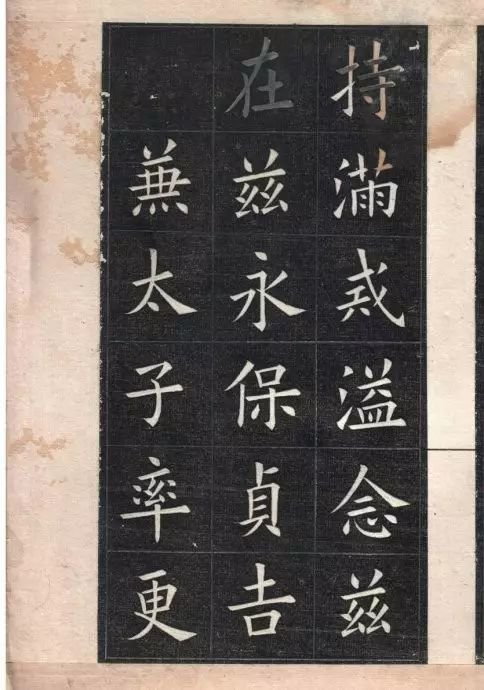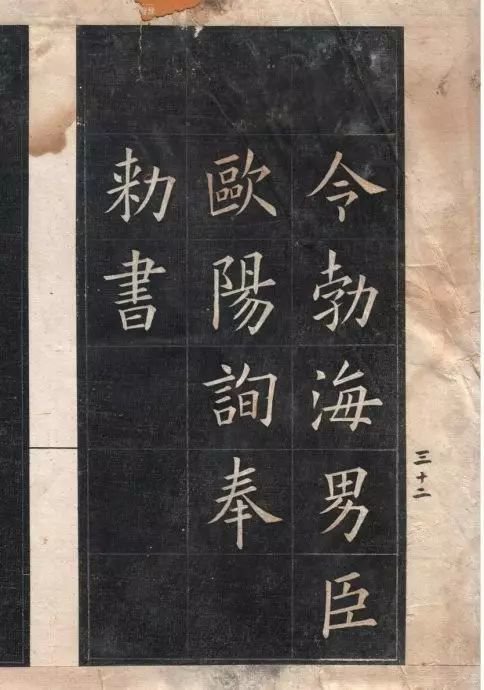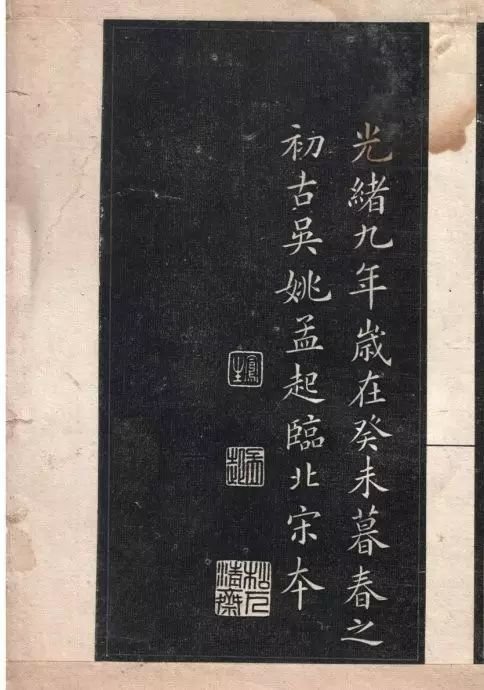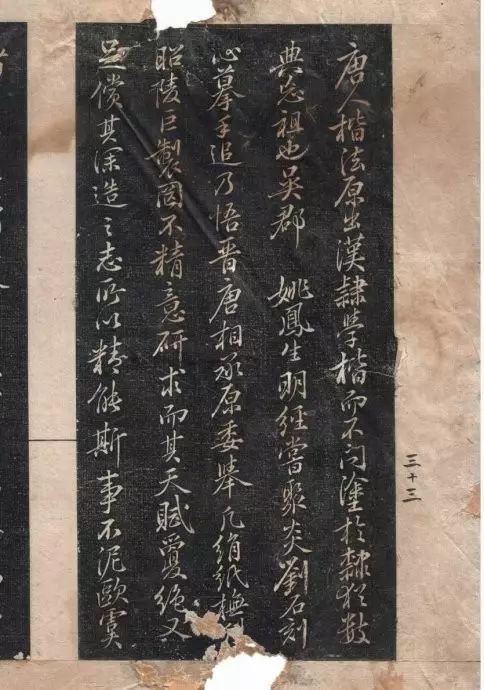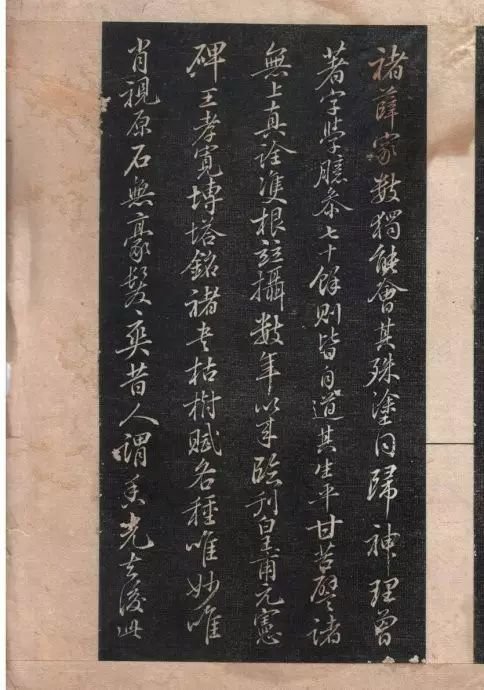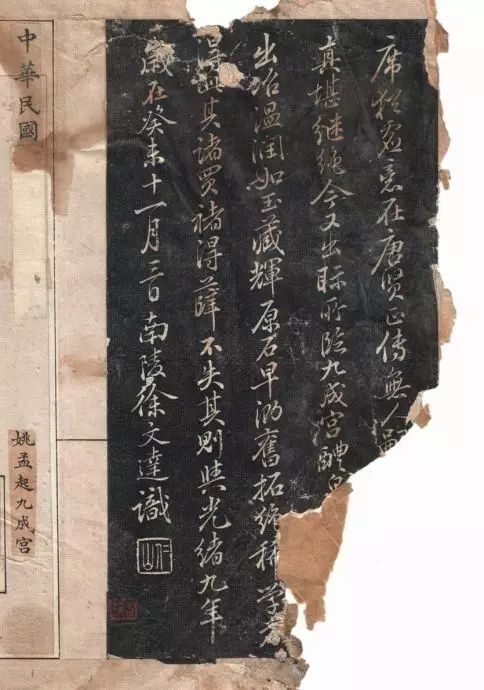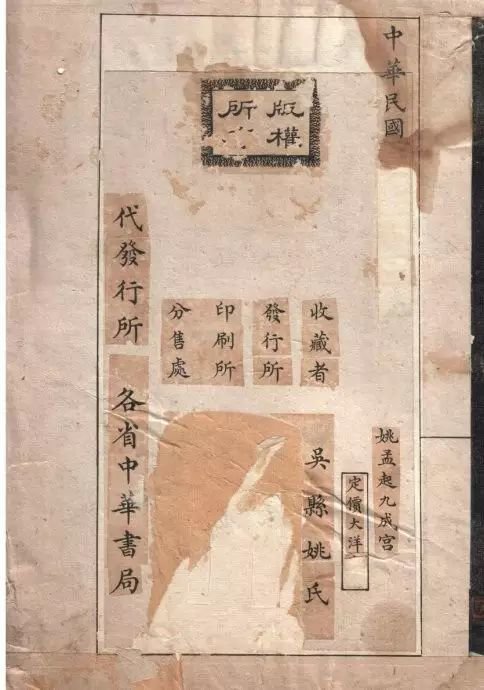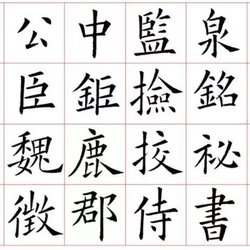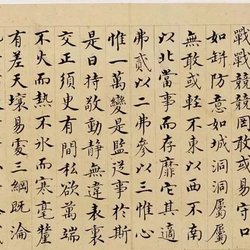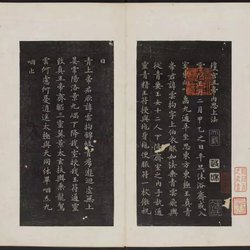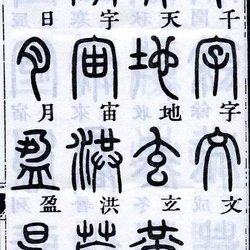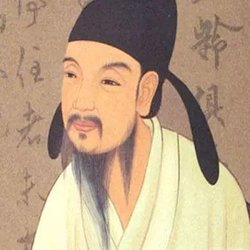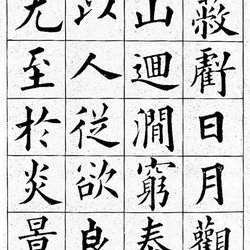Jiucheng Palace, the full name is "Jiucheng Palace Liquan Inscription Stele", written by Wei Zheng and Ouyang Xunshu Dan, it was established in April of the sixth year of Zhenguan (632 AD). It records the discovery of spring water by Taizong when he was vacationing in Jiucheng Palace. The stele is 2.7 meters high, 0.27 meters thick, 0.87 meters wide at the top, and 0.93 meters wide at the bottom. The whole stele has 24 lines and 49 characters. The head of this stele is connected to the body, with six dragons entwining the head. The forehead is inscribed with the six-character inscription Jiuchenggong Liquan, and the side has the inscriptions of the Song and Ming Dynasties. The base of the stele has been damaged and is now broken into five stones. It is still in Jiuchenggong, Linyou, Shaanxi.
Jiuchenggong was written by Ouyang Xun when he was seventy-five years old. His writing style is square and neat, and his structure is rigorous. It fully demonstrates the characteristics of Ou's book's precise structure and layout, and its roundness and elegance. There is not a single stroke of slack in the whole stele, nor is there any disorder. , is Ouyang Xun's peak work. Zhao Han of the Ming Dynasty commented on this stele in "Graphite Engraving Hua" as "the first official book". Or praise and say: Kaifa is the ultimate rule. It’s not an exaggeration.
This stele is regarded as a model for later generations of calligraphers. It has many vertebral extensions and weathering. The stele has been damaged by broken words. Some people are gouging out the stele for profit, while others are digging and repairing it. Over time, almost every word is not left untouched and every word is not repaired. By the Ming and Qing Dynasties, the strokes were thin and weak, losing all their edge and original intention. Therefore, although there are many old rubbings, there are very few rare copies. Today, we are very fortunate to have good workmanship, old rubbings, and photocopies, so there is much to see. However, although there are rare copies, the selection, photography, plate making, paper use, printing, and binding are all indispensable. This is a miscellany.
Yao Mengqi's [Qing] courtesy name was Fengsheng, his first name was Fengsheng, and he was a Gongsheng student in Wuxian County (Suzhou, Jiangsu Province). According to the title of the book, Ouyang Xun, the author of Zongshu, tasted the Liquan inscription in Jiucheng Palace and forced the portrait. The official script is slightly imitated by Chen Hongshou. He also treated seals and got Jiang Ren's Xiu Jin Qi. I paint occasionally, as crudely as a gold farmer. "Ink Forest on the Sea, Biographies of Guangyin People, Records of Calligraphers and Painters of the Qing Dynasty, History of Wumen Painting"
